Shamanism
Texts extracted from Interviewing Inuit Elders, Cosmology and Shamanism, Volume 4, published in 2001 by Mariano and Tulimaaq Aupilaarjuk, Bernard Saladin d’Anglure (Eds) and participating students Susan Enuaraq, Aaju Peter, Bernice Kootoo, Nancy Kisa, Julia Saimayuq, Jeannie Shaimayuk, Mathieu Boki, Kim Kangok, Vera Arnatsiaq, Myna Ishulutak, and Johnny Kopak, © Nunavut Arctic College, Iqaluit.
Shamanism and the Life Cycle: Names, Souls, and Spirits
One of the best ways to come to an understanding of Inuit shamanism, angakkuuniq, is probably by examining beliefs and customs about personal names, atiit, and their relationship to the life cycle, inuusiq, and the way people conceive the person, inuk, the soul, tarniq, and the spirits, tuurngait. Some shamans would be given a helping spirit with the same name as their birth name. Thus, when Ava became a shaman, his helping spirit was also called Ava—a small female shore spirit. Similarly, Nanuq, a Natsilik from the Naujaat area, was named at birth after a close relative. When the relative died, he was given Nanuq as a helping spirit. Ashaman who was training him at the time gave him a new personal name, Qimuksiraaq. If a shaman wished to save the life of a seriously ill child, it was not uncommon for him to give it the name of one of his helping spirits, as Aupilaarjuk will tell us further on. A name was to a person as the helping spirit was to a shaman. It was a source of vitality, power, and social bonding, as much with the world of the humans as it was with the world of the spirits and the world of the dead. If a child was given the name of a living person, a very strong bond was created between the two namesakes. They would be calledatiqatigiik (Iglulik dialect), sauniriik (Aivilik or Nunavik dialect), or kiigutigiik (language of the spirits and shamans).
Some names could be chosen before birth, others at the time of birth, and still others later on if the person’s physical or mental health required a change of name. Often a child’s personal name would be chosen following a dream by one of its parents. If a living or deceased person appeared in a dream and asked to come in to drink and eat, this was considered to be a sign of the person’s wish to bestow his or her name on the infant. These wishes had to be respected. Besides the personal names given to a child, there were affectionate little nicknames from the aqausiit, or songs of affection, that the immediate family composed for the child. These nicknames, like the songs they were associated with, were truly part of an individual’s personality. Names, nicknames, and aqausiit could be passed down from generation to generation together with the powers, either positive or negative, that they contained because of the acts performed by those who bore them.
Names, atiit, and nicknames, atirusiit, are a major component of the human person. The soul, tarniq, is another. In the language of the spirits and shamans, it was called by the term pullaq, meaning a bubble. People believed that somewhere in a living person’s body was the soul, in the form of an air bubble containing a scaled-down model of the individual. When the individual died, the air bubble burst. The miniature image then grew to human size and, in an ethereal form, went to live in the land of the dead. The souls of the living were fragile, especially those of children and women. Malicious shamans would endeavour to steal the souls of those they wished to harm. Women were subjected to many ritual restrictions and injunctions during their childbearing years. They could nevertheless become powerful shamans. They were greatly feared after menopause, when only their tattoos distinguished them from the men. They were then believed to be very powerful.
Human life, inuusiq, was predetermined at birth. The lifespan of each individual was therefore determined in advance and people were supposed to try to live out their allotted time to the very end. Amulets or a shaman’s action had the power of bringing people back from death if their time was not yet up, inuusinga nungunngimmat. These temporarily dead people were called angirraqtut.
Reference:
Mariano and Tulimaaq Aupilaarjuk, Bernard Saladin d’Anglure (eds.), 2001, Cosmology and Shamanism, Interviewing Inuit Elders, Volume 4, Iqaluit: Nunavut Arctic College, pp. 9-10.
About the word angakkuq
[…]
What does that word angakkuq mean?
Nutaraaluk: There were two types of angakkuit. Those that used their powers to kill people and those that tried to help by healing people. These angakkuit were even more powerful than doctors because they could revive a dead person. That's the way it used to be. These are the things I have heard about shamanism. I have never actually seen an angakkuq practising myself, but I strongly believe that angakkuit can lure wildlife. They can go down to Sedna to find out why the wildlife is remaining down there. They can ask why she is luring all the animals to her. Even the caribou can go there. If we had been disparaging towards the animals in any way, then we had nothing to hunt. We had to be happy about the animals and if for some reason we were unhappy about them, they disappeared. That is the best way I can describe what the word angakkuq means. When I was in Puvirnituuq, I said that I was glad that there were no longer any angakkuit, but I was told that every community has an angakkuq and that angakkuit will always exist in every community. This was told to me.
Are there still angakkuit today that go after people to kill them, or put hexes on them?
Nutaraaluk: I used to be happy that there were no longer any angakkuit because the communities seemed healthy and organized. The communities were finding answers for their problems. There wereangakkuit that killed people, ones that healed, and ones that dealt with wildlife.
My father used to visit Sedna to get wildlife. My father was a very powerful angakkuq, before he converted to Christianity. My father never tried to kill people, because he did not want this to be a hindrance when he was trying to save a person’s life. My father told me he saved a person who was very ill and about to die. My father was not shy to talk to me about his powers. Tunukallak was the old woman that made him into a very powerful angakkuq. My father used to help her every day and that's why she made him into an angakkuq. Tunukallak was a very powerful angakkuq. Around the time when the qallunaat first started coming up here in sailboats to Nuvuk, a ship was wrecked. At first the people tried to save them, but later because they wanted their knives and other things, they killed them during the night. They put long mitts on their victims so they were easier to kill. They did not know that they would have been rewarded for saving them. They wanted all the metal they could find.
Reference:
Mariano and Tulimaaq Aupilaarjuk, Bernard Saladin d’Anglure (eds.), 2001, Cosmology and Shamanism, Interviewing Inuit Elders, Volume 4, Iqaluit: Nunavut Arctic College, pp. 10-11.
Angakkuuniq: The Powers of the Angakkuq
Not everyone was fortunate enough to become an angakkuq. Certainly, many Inuit could have special powers or gifts, such as the power to stop a wound from bleeding by licking it, the power to interpret dreams, the gift of premonition, the gift of making game animals appear, the power of divination, and so on. An ordinary person could have these gifts but there was still a special category for shaman. The vocation of shaman could begin early in life, even before birth, as was the case with Ava, whom Rasmussen met in Iglulik in 1922. While Ava was still in his mother Ataguarjugusiq’s womb, a female shaman predicted he would become a shaman because he reacted every time his parents broke a ritual prohibition—and there were many of them during a woman’s pregnancy. The delivery was difficult and the baby almost died at birth, having been almost strangled by his umbilical cord. The same female shaman was called to the rescue. She saved the child, confirmed her initial diagnosis, and then imposed a large number of restrictions on the parents and the child.
Some shamans began their vocation later in life, on the occasion of an exceptional event such as a serious accident, the loss of someone in the immediate family, or a meeting with a spirit. Such people were self-made shamans possessing very great powers—in exchange for a shorter life. Too much power was dangerous. Most shamanistic vocations began in adolescence and involved a training period under the supervision of one or more recognized shamans. The length of this apprenticeship varied from one Inuit group to the next, but it usually stretched over several winters. The first objective was initiation into the language of the spirits and into the conduct of rituals—both private and public. Then came the acquisition of clairvoyance, qaumaniq, which showed itself in a clear, brilliant aura visible to animals, spirits, and shamans. To acquire a strong qaumaniq, long periods of isolation and abstinence were needed. Some candidates never managed to acquire it. According to Aupilaarjuk, the shamans and tuurngait who committed bad actions had a very dark aura, taarniq.
The last phase of the apprenticeship was the acquisition of tuurngait, i.e., helping spirits. Many such spirits would solicit an apprentice shaman if he had a brilliant qaumaniq. Caution, however, was needed before agreeing to enter into a relationship with them. It was better for an apprentice to wait for his mentor to offer to share one of his tuurngait. There were all kinds of tuurngait: tarniit of deceased parents; great mythical figures; spirit masters of different animal species or of any entity belonging to space (such as heavenly bodies), the land world, or the sea world; spirits of lakes, mountains, or rivers; and invisible spirits belonging to human-like groups. All of these spirits could assume human form. Some were composite in their appearance, with chimerical forms. There were also male and female spirits, giants and dwarfs [cf. Representing Tuurngait, F. Laugrand, J. Oosten, and F. Trudel, Arctic College 2000].
Once he had obtained the assistance of different tuurngait, the apprentice shaman could work on his own and prove himself by responding to requests for help from individuals, by caring for the ill, or by carrying out public performances. In some emergency situations, however, there was no time to organize a shaman’s séance, sakaniq. One would resort at such times to incantations called irinaliutiit, either recited or sung, or shouted prayers called qinngarniq. Shamans would use these, but so would ordinary people if they had been taught.
Reference:
Mariano and Tulimaaq Aupilaarjuk, Bernard Saladin d’Anglure (eds.), 2001, Cosmology and Shamanism, Interviewing Inuit Elders, Volume 4, Iqaluit: Nunavut Arctic College, p 33-34.

